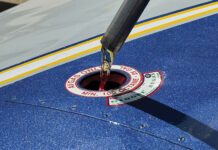When I review accident reports for the Used Aircraft Guide, I’m struck by how often pilots mismanage the fuel system. Usually it’s running one tank dry and not figuring out how to get fuel flowing to the engine from a tank that has fuel. From time to time a pilot pumps fuel overboard because he doesn’t understand that on a fuel-injected engine, fuel and fuel vapor is returned from the engine-driven fuel pump to one of the fuel tanks.
On some airplanes, the return fuel and vapor goes to a designated tank rather than the tank the pilot has selected to get fuel to the engine—notably on tip-tank Cessna twins and early model Bonanzas. If the tank that is receiving return fuel and vapor is full, the excess will be pumped overboard, reducing the range of the airplane.
Know where the boost pump is located so you can check the area during preflight for signs of fuel leaking.
Make sure you understand how your boost pump is intended to work in conjunction with the engine-driven pump.
If the boost pump runs on standby, so to speak, on takeoff and landing, to supply fuel if the engine-driven pump fails, the checklist will call for it to be on for takeoff and landing, but off during the remainder of the flight.
If the checklist calls for the boost pump to be off during takeoff and landing, it is to be activated by the pilot only if the engine-driven pump quits. Turning it on—to either low or high position—with the engine-driven pump running, will result in excess fuel being supplied to the engine, potentially flooding it.
Should you experience fuel flow fluctuations—usually at altitude or climbing on a hot day—it’s probably due to the fuel vaporizing in the lines. The solution is to turn on the boost pump—to the low position if there is a choice. That should clear up the problem, but it also requires adjusting the mixture as the increased fuel flow will have the engine running too rich.




